| Rentals
& Lodging Vallarta Condos - La Palapa rentals - Beach condos PB - El Dorado rentals - Molino de Agua Vallarta Villas - Two bedroom villas - Three bedrooms - 4 bedroom villas - 5 & 6 bedrooms Gay
Puerto Vallarta |
- Dia de los Muertos every November 1-2 The Mexicans celebrate the Day
of the Dead or Dia de los Muertos every Nov 1-2, November 1 is generally referred
to as Dia de los Inocentes (Day of the Innocents)
|
Downtown along the Malecon boardwalk on Nov
1-2, 2017
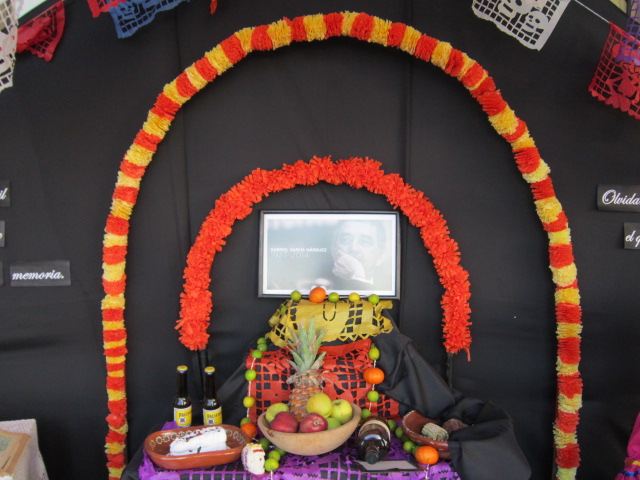
The arc, made of reed and flowers,
symbolizes the door of the entrance
to the world of the dead - El arco,
hecho de cana, carrizo y flores, simboliza ser
la puerta de la entrada al mundo de
los muertos.
Notice here the bowl of fruit,
bottles of beer and the traditional bread offering,
for Gabriel Garcia Marquez, the noted Colombian novelist and author who
died in April 2014.
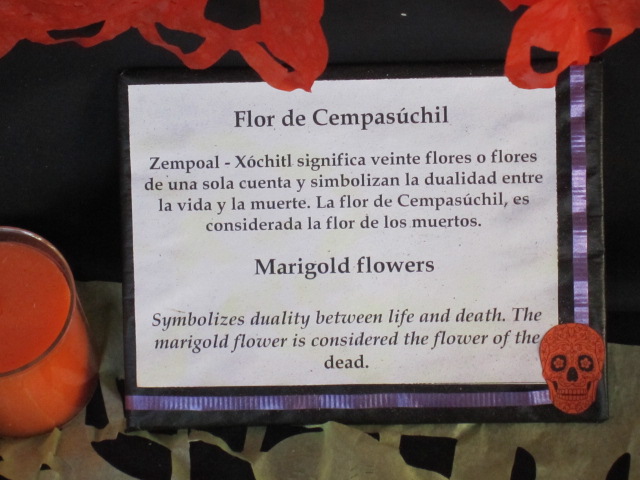
Flor de Cempasuchil - Marigold flowers
Xochitl Zempoal means twenty flowers
or flowers of a single account
and symbolize the duality between life
and death.
The marigold flower is considered the
flower of the dead.
It is believed that the spirits of
the dearly departed visit the living during these festivities.
Marigolds guide the spirits to their
altars using their vibrant colors and scent.
Fowers in general also represent the
fragility of life.
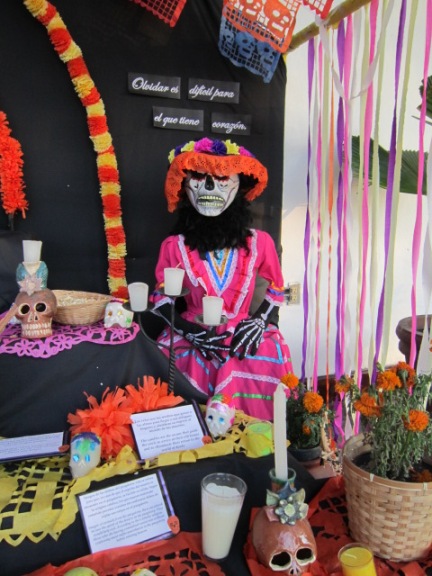
"Forgetting is difficult for those
with heart"
Here we see the traditional skulls
and of course the marigolds
which are believed to attract the souls
of the departed.
Notice the large Catrina in the background
(female skeletal figure representing death)
and of course the ever present candles,
which help light the way back for the deceased to
their ancestral homes on Earth, and
also for their return to the "Land of the Dead".
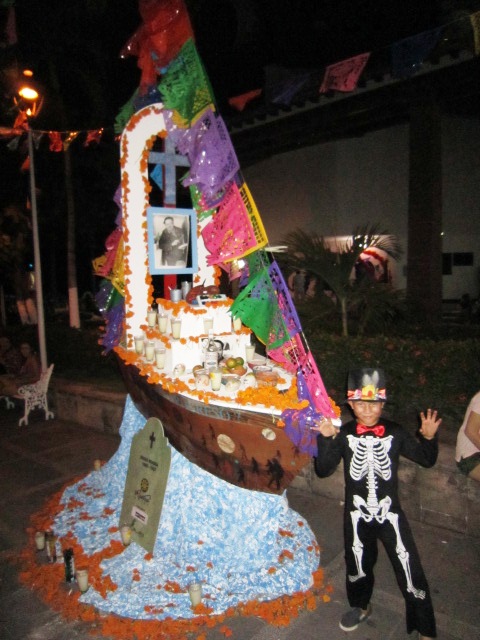
Unusual boat shaped remembrance altar
to the great Mexican painter and muralist Diego Rivera, 1886-1957
with a young skeleton boy kindly posing
for me
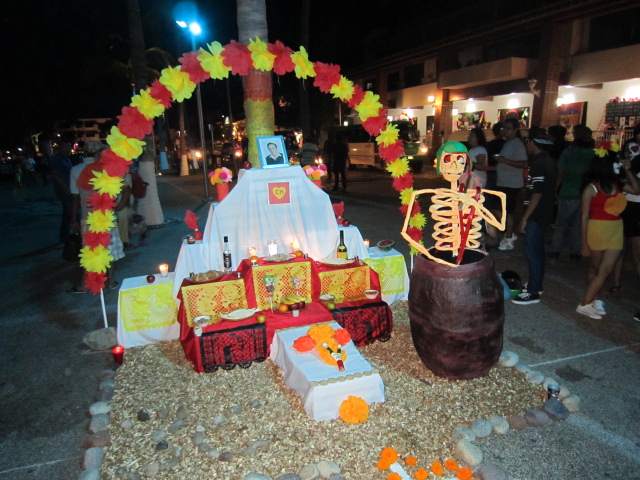
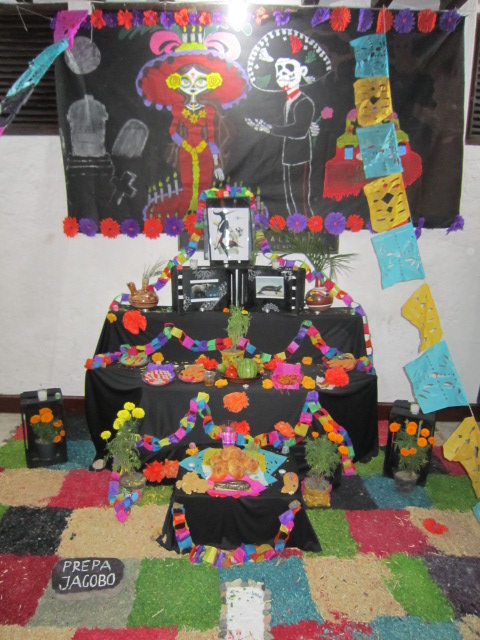
An usual altar dedicated to those natural
species which have become extinct
which include the imperial woodpecker,
Caribbean monk seal, and the Mexican grizzly bear
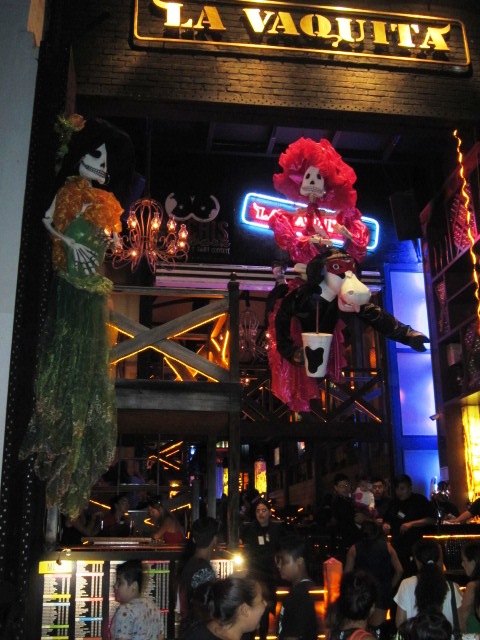
La Vaquita downtown nightclub with
its enormous katrinas for the celebrations in November 2016 -
I took this photo on Halloween night
and there were large crowds wandering about
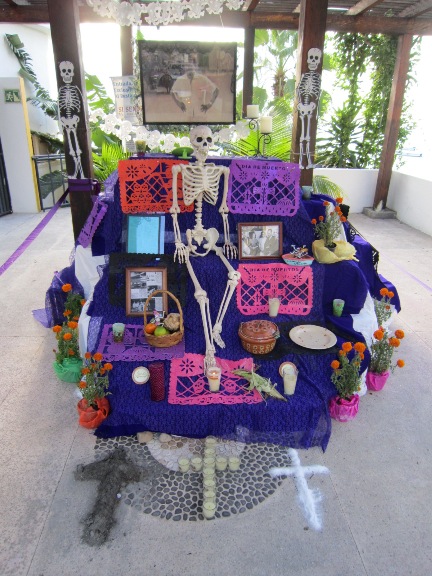
At the Hotel Emperador and Si Senor
beachfront restaurant
The cross on the floor represents not
only the Catholic symbol of the cross and the crucifixion
but also the four cardinal points:
north, south, east and west
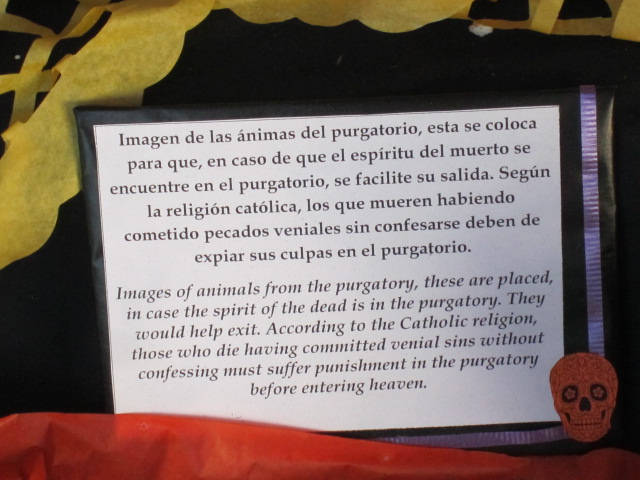
Images of animals from purgatory, these
are also placed on the altar in case the spirit of the dead
is in purgatory; they would help the
soul to leave. According to the Catholic religion those
who die having committed venial sins
without confessing must
suffer punishment in purgatory before
entering heaven.
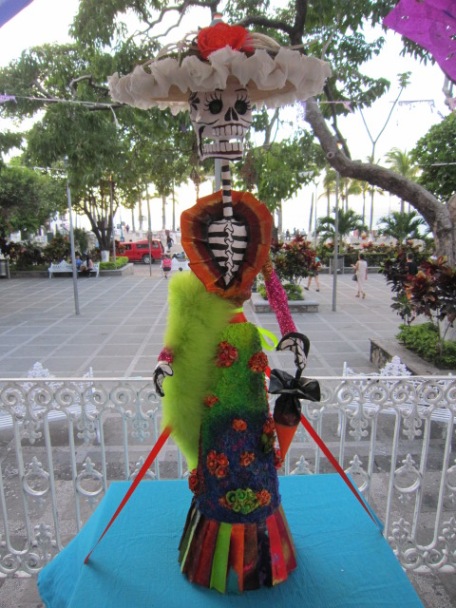
This splendid La Catrina above was
created by artist Guadalupe Briones in 2015, with a fabric flower hat,
painted with acrylic diamond bag, and
pleated skirt with colorful flowers and artistic neck.
The figure has become the referential
and traditional image of Death in Mexico,
where it is quite common to see her
embodied as part of the celebrations of Day of the Dead throughout the country.
The popularity of La Calavera Catrina
as well as her name
is derived from a 1948 work by the
great Mexican artist Diego Rivera.
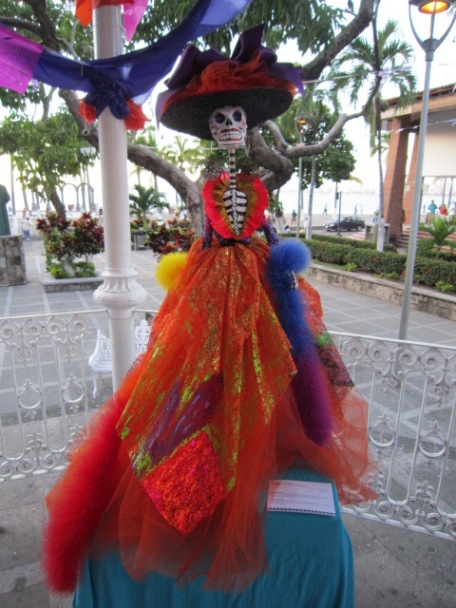
Thus the Catrina has come to symbolize
not only El Dia de los Muertos and the Mexican willingness to laugh at death
itself,
but originally Catrina was an elegant
or well-dressed woman (as seen in the several photos above and below),
so it also refers to rich people.
There is the awareness that Death brings
an equalizing force to Life, and that in the end everyone is equal,
and sometimes human beings have to
be reminded of this.
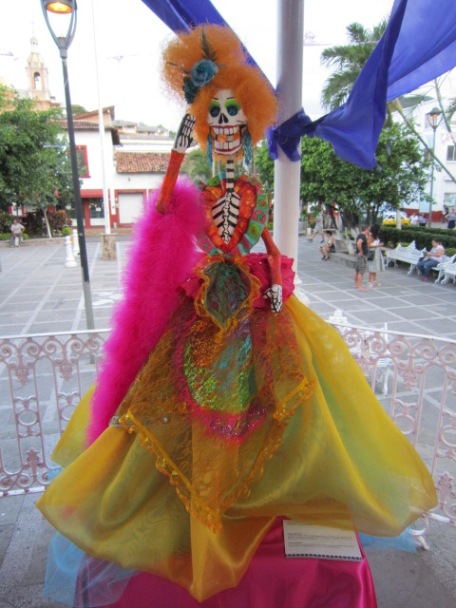
another lovely and frightening La Catrina
created by Vallarta artist Guadalupe Briones

Feliz Dia de Muertos - Happy day of
the dead
This is our Mexico - Este es nuestro
México
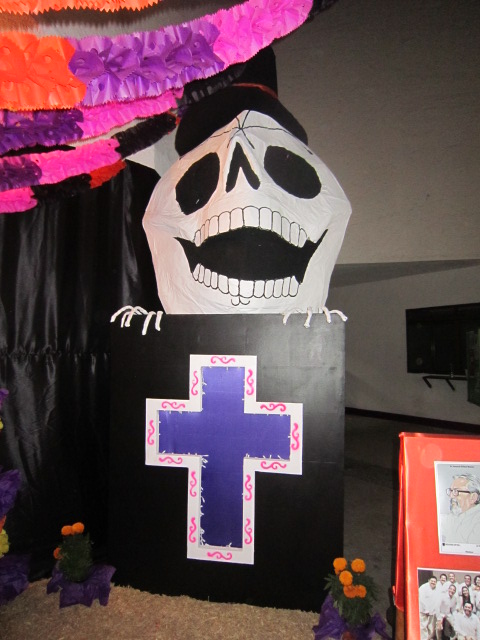
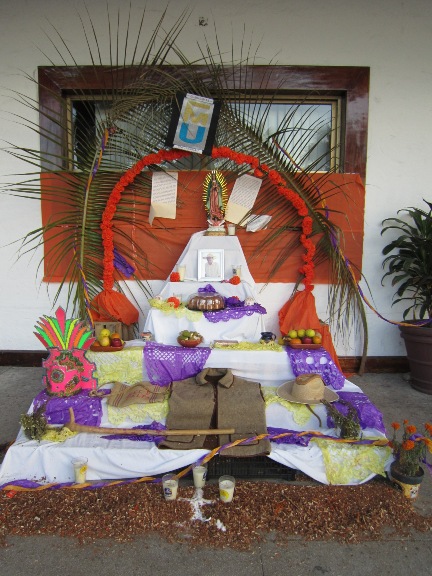
Camino de flores se utiliza para guiar
el camino de las almas a la ofrenda de muertos
A flower path is used to guide the
souls to the offerings
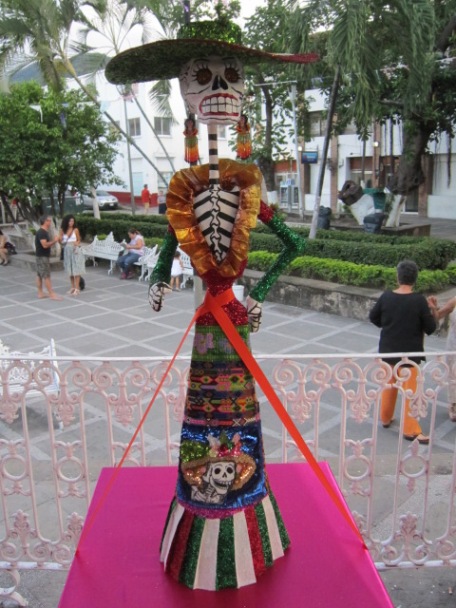
Lupe 1 Description: Huichol bracelets,
Mexican Virgin of Guadalupe applications, Catrina
sequins and beads, acrylic paint, glitter
effects, Huichol beaded earrings,
tulle hat with paper flowers. 70 cm
tall and made in 2015 by Guadalupe Briones
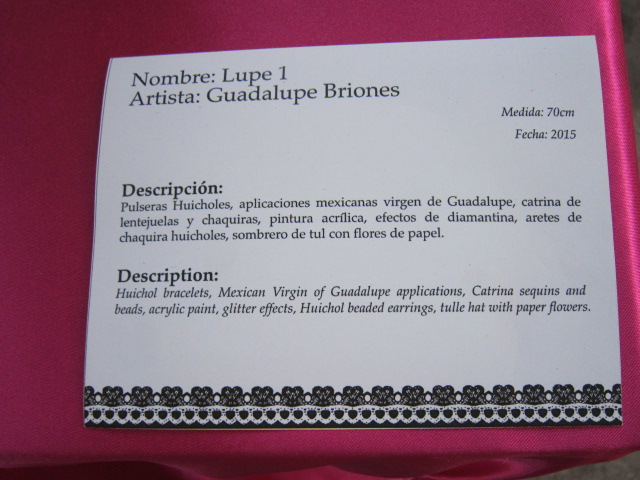
To give an abbreviated history, Day
of the Dead traditions appear rooted in pre-Hispanic convictions that
the spirits of the dead
went neither to a heaven nor a hell,
but wandered for years or ages before entering Mictlan, the "Land of the
Dead".
Traditions and festivities vary throughout
Mexico due to its 60 or so indigenous groups. In some communities
the relatives of the deceased burn
incense over the altars, while in other localities people
light bonfires in their house doorways
to guide the souls of the dead home.
Some Mexicans have all night vigils
while others arrange an afternoon meal
at the gravesides of their departed
loved ones, friends and relatives.
These gatherings are often festive
and solemn by turn.
The Day of the Dead holiday in Mexico
also combines the Spanish catholicism of All Saints Day and All Souls Day
with the symbols and mythology of the
earlier pagan and more ancient indigenous traditions
(much like the yearly Our
Lady of Guadalupe celebration which combines catholic and pagan influences)
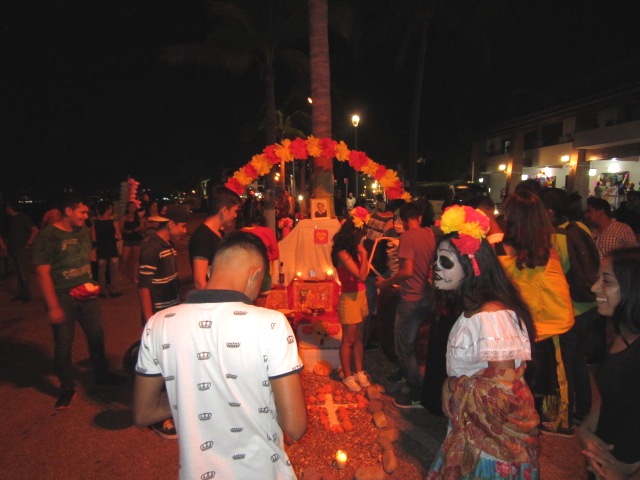
More fun things to see and do
during your stay in town -
Downtown along the main stretch of
the Malecon boardwalk during the 2016 celebrations
when many altars are constructed and
flowers and remembrances placed.
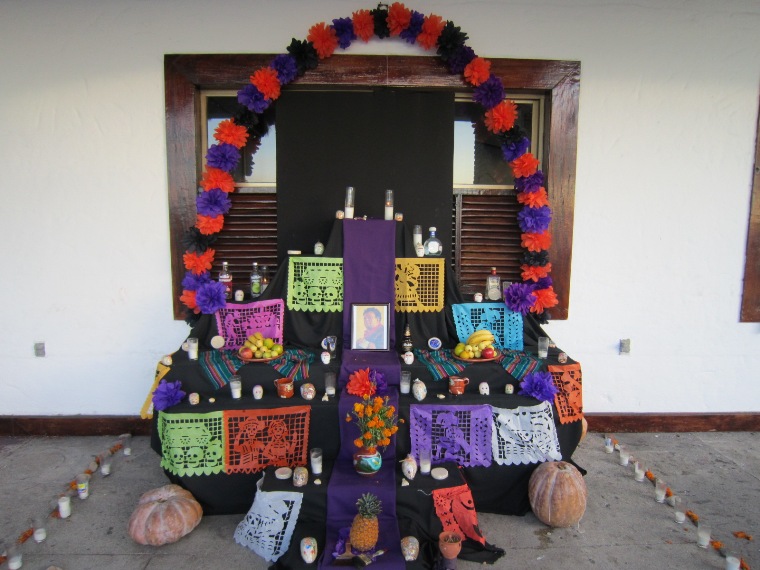
Dedicted to the great Mexican artist
and muralist Diego Rivera
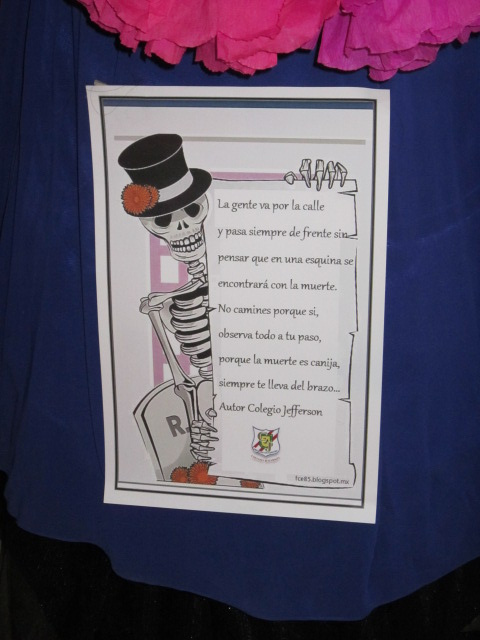
La gente va por la calle y pasa siempre
de frente sin pensar que en una esquina se encontrará con la muerte.
No camines porque si observa todo a
tu paso, porque la muerte es canija.... - Colegio Jefferson

Thanks to
El Coleguita
seafood restaurant for this photo of their Altar to the Dead from October 30,
2020.
Located in the Marina on Popa Street, local 17,
Mariscos El Coleguita since 1989 has been known for its
friendly service and reasonable prices
Return to main Day of
Dead page
"It is better to die on your feet
than to live on your knees." - revolutionary Emiliano Zapata
top of page
| apartments
andale | downtown
pictures | vallarta beachfront condos
| gay bar photos 2
| Puerto Vallarta gay guide
plaza mar rentals | art pictures
| gay activities
& photos | one beach street condos | town photos 5
whale watching tours
| gay beach photos 3 | directory
phone numbers | Email contact